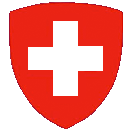

Monitoring the Effectiveness of Habitat Conservation in Switzerland WBS ¶
To protect precious habitats and the biodiversity, Switzerland designated about 7000 sites of national importance. These sites are legally protected and include fens and raised bogs, dry grasslands, and flood plain habitats as well as amphibian breeding sites. In 2011, the Federal Office for the Environment (FOEN) and the WSL Swiss Federal Research Institute launched the joint project "Monitoring the effectiveness of habitat conservation in Switzerland WBS" to observe developments and changes in these sites.
The sites of national importance are a crucial element of the network of protected sites in Switzerland. The WBS is using remote sensing as well as extensive floristic and faunistic field surveys to evaluate whether these sites are developing in line with their conservation targets and whether the area and quality of habitats is being maintained. These indicators permit the identification of negative changes at both national and regional level, such that appropriate measures can be initiated. The WBS is operated as a long-term program. The first survey period ended in 2017, the second in 2023. The third survey period has been running since 2024, while the two first are currently being analysed in detail.
The results of the second survey period, which was completed in 2023, were published in three documents: a detailed report and an abridged version summarising the most important information in both German and French:


